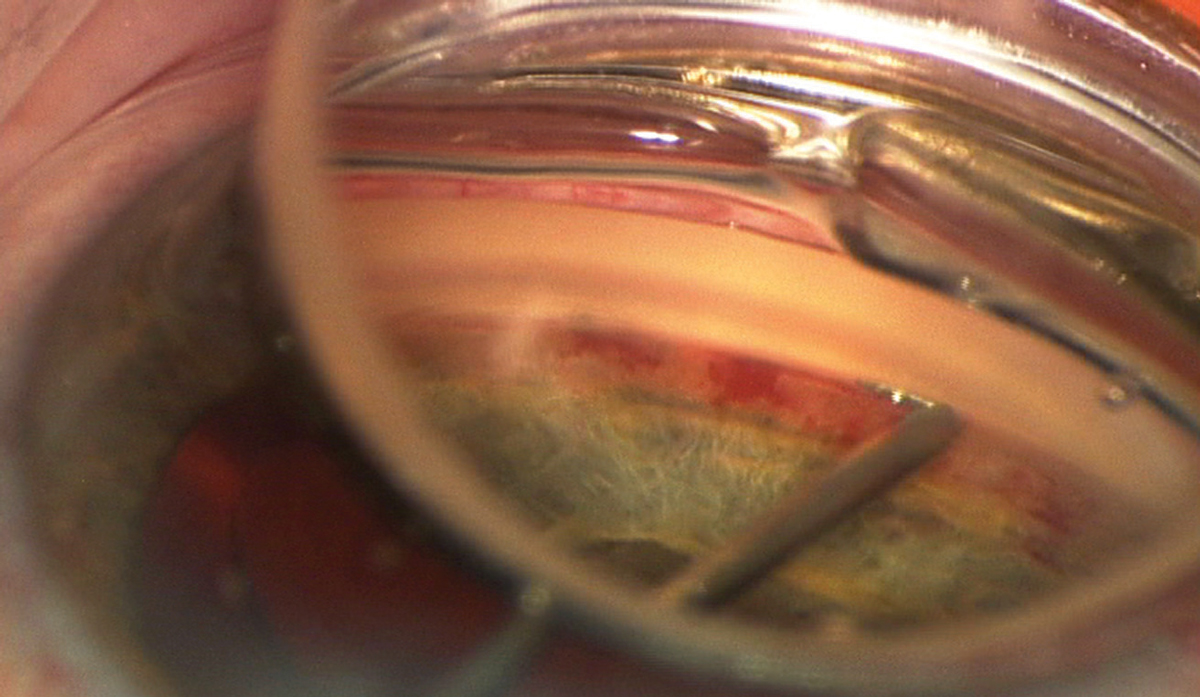 |
Practical considerations when selecting a trabecular procedure include patient history of uveitis, secondary glaucoma, metal allergy, bleeding risk (anticoagulant use) and surgeon experience. Photo: Joseph W. Sowka, OD. Click image to enlarge. |
Doubling up on pressure-lowering procedures may produce meaningful results over time for open-angle glaucoma (OAG) patients, according to a recent report by the American Academy of Ophthalmology’s Ophthalmic Technology Assessment Committee Glaucoma Panel, which reviewed the current literature on combined trabecular/cataract compared with cataract surgery alone. While both approaches show good track records for lowering pressure, the combined approach may offer patients a small edge.
The researchers’ PubMed literature search returned 279 articles, of which 20 were graded for quality and 10 of those studies (all level I randomized controlled trials) were included in the final assessment. The researchers noted that all 10 of these studies were “subject to potential industry-sponsorship bias.”
They reported that based on medication washout studies with two-year data in patients with hypertensive, mild to moderate OAG, adding a trabecular procedure to cataract surgery resulted in an additional 1.6 to 2.3mm Hg IOP reduction—i.e., 4% to 9% IOP reduction, resulting in an average reduction of about 0.4 medications; vs. cataract surgery alone, which on its own reduces IOP by approximately 5.4 to 7.6mm Hg or by about 21% to 28%, possibly eliminating 0.8 to 1 glaucoma medications.
“The three most studied trabecular procedures [iStent/iStent Inject, Hydrus Microstent and excisional goniotomy via Kahook Dual Blade] appear to produce similar results among hypertensive mild to moderate OAG subjects with modest IOP reduction or medication reduction over cataract surgery alone at two years,” the researchers wrote in their paper. “There is no clear benefit of adding one trabecular procedure to cataract surgery over another based on these available data.”
Future research should focus on standardizing outcome definitions, avoiding sponsorship bias and studying efficacy in normotensive OAG, since all studies were in patients with pretreatment IOP of 21 mmHg or less, the researchers pointed out in their paper.
“Although the primary goal for MIGS surgeons is often to reduce the medication burden, the mild mean IOP reduction of approximately 2mm Hg by a trabecular procedure is estimated to result in a mean reduction in number of medications of 0.4 at two years.” Therefore, they wrote that it’s good to tell patients that adding a trabecular procedure can further decrease their medication burden.
Richter GM, Takusagawa HL, Sit AJ, et al. Trabecular procedures combined with cataract surgery for open-angle glaucoma: Ophthalmic Technology Assessment. Ophthalmology 2023;1-13. |

